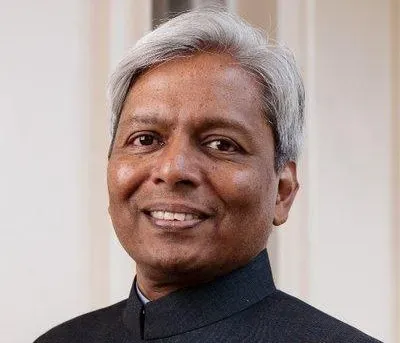An interview of K. VijayRaghavan, the principal scientific adviser to Govt. of India

The Tata Institute of Fundamental Research (TIFR), Mumbai celebrated 50 years of Graduate School Programme on November 1, 2019. Eminent academics from across the country gathered to discuss the role and impact of graduate schools in India. K. VijayRaghavan, the Principal Scientific Adviser to Govt. of India, TIFR alumnus and former Director of NCBS, attended the event. He addressed the gathering on the way forward at a national level. As a science communicator at TIFR, I took the opportunity to ask K. VijayRaghavan a few questions, and he talks about reimagining Indian institutes to tackle demands of sustainable development and climate change.
What is the agenda for the gathering and what will spawn out of it for India and TIFR?
What we are doing is to project a vision for the coming decade or two of how the graduate school is going to be of a new kind. This is because we face new challenges in the 21st century, both internal and external.
Internally, TIFR, with its new campus coming up at Hyderabad, needs to imagine it as a great institution of the future. So its an extraordinary opportunity to build an institution from scratch to tackle modern challenges. At the same time, all other TIFR centers, Colaba campus included, also need to reimagine themselves.
The external challenges are in the context of demands of sustainable development and climate change. There is no more important time than today where both Science and Technology are needed to address these issues at scale. And therefore the graduate programs must grapple with that too.
You mentioned that 95% of the Indian govt. funding goes to central institutes but 95% students go to state universities. Therefore, you suggest that TIFR should increase interactions with local institutions. Can you expand on that?
It’s not just about a disparity in funding, but more importantly it’s about the capacity of the system to absorb additional resources. So while the government is committed to injecting more resources, it’s also committed to building up quality so that these resources can be well spent.
The way we can have both quality and speed is by the interaction of these great hubs such as TIFR, IISc, etc. with our state university system. When they start interacting more and collaborate in research, then we excel at a national scale.
How do you see this interface extending to technological organizations and hubs, private or otherwise?
What is most prominent today more than ever is that there’s really no distinction between basic and applied sciences. Today the way technology is changing, it feeds back to demands for various kinds of basic sciences. And the way basic science is changing, it results in new technologies. So I like to call this a Jalebi (spiral) of interactions rather than a pipeline going from basic to applied sciences. And therefore I like the term fundamental research as opposed to basic research. When it’s fundamental research, it can be fundamental in science, technology or even humanities. And so interfacing with other organizations across the science and technology domains is not just imperative, but would also be an ode to the name of TIFR.
Originally published at TIFR.